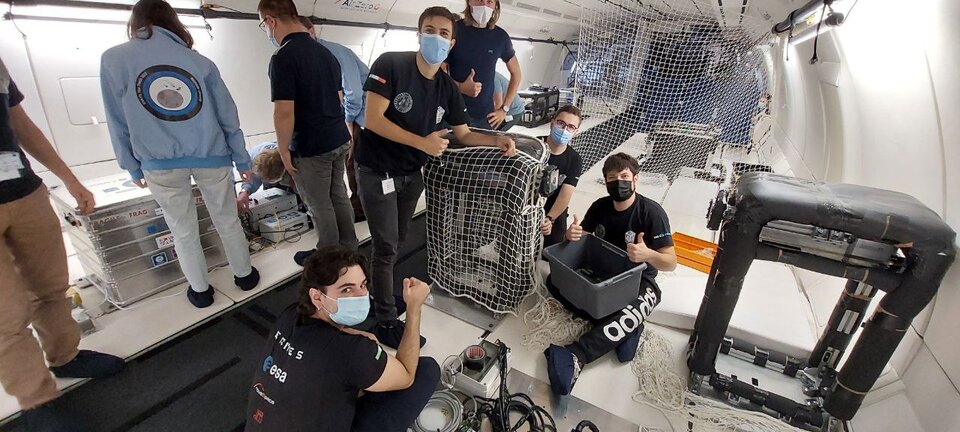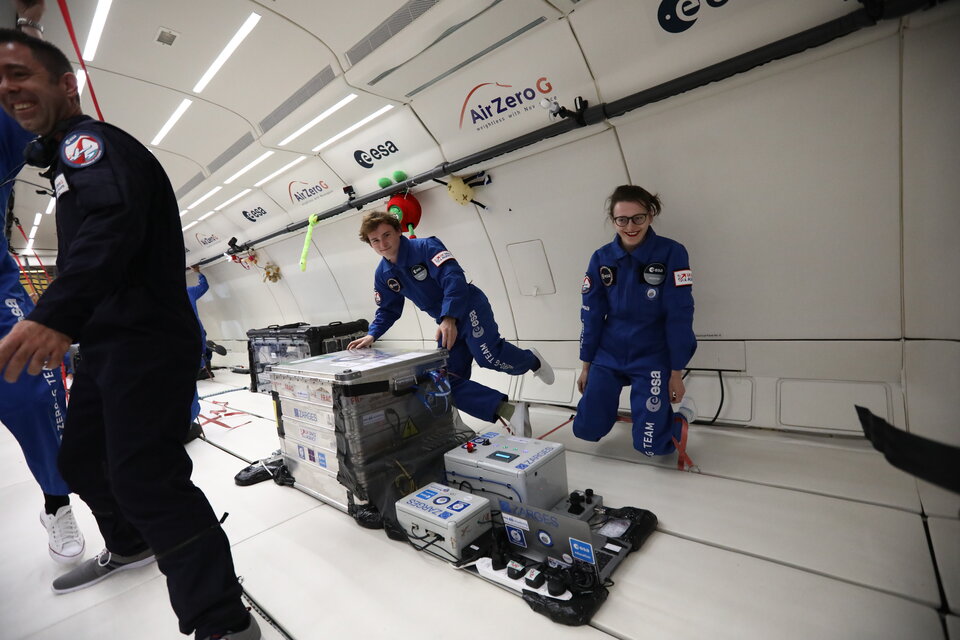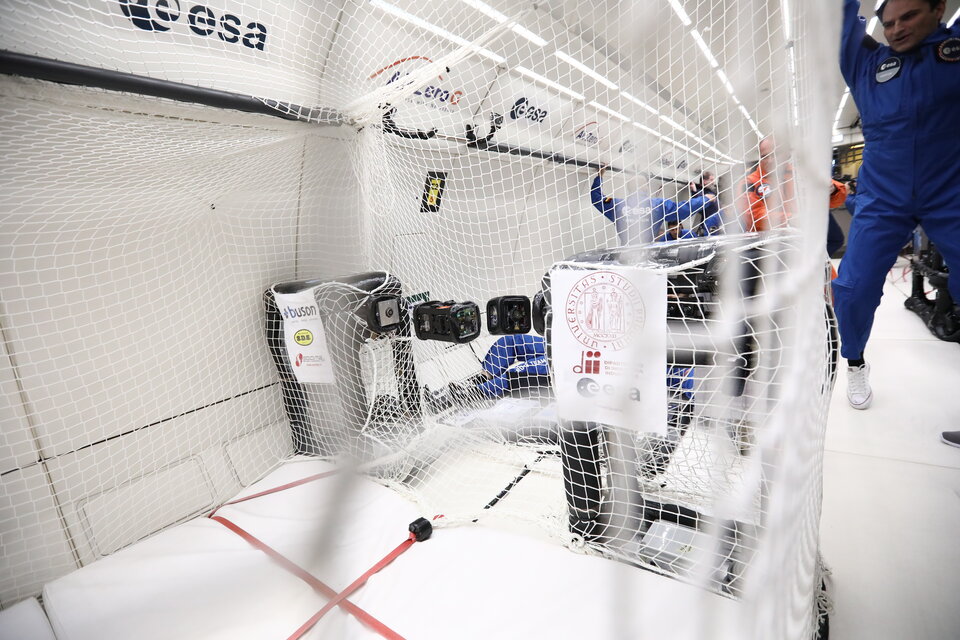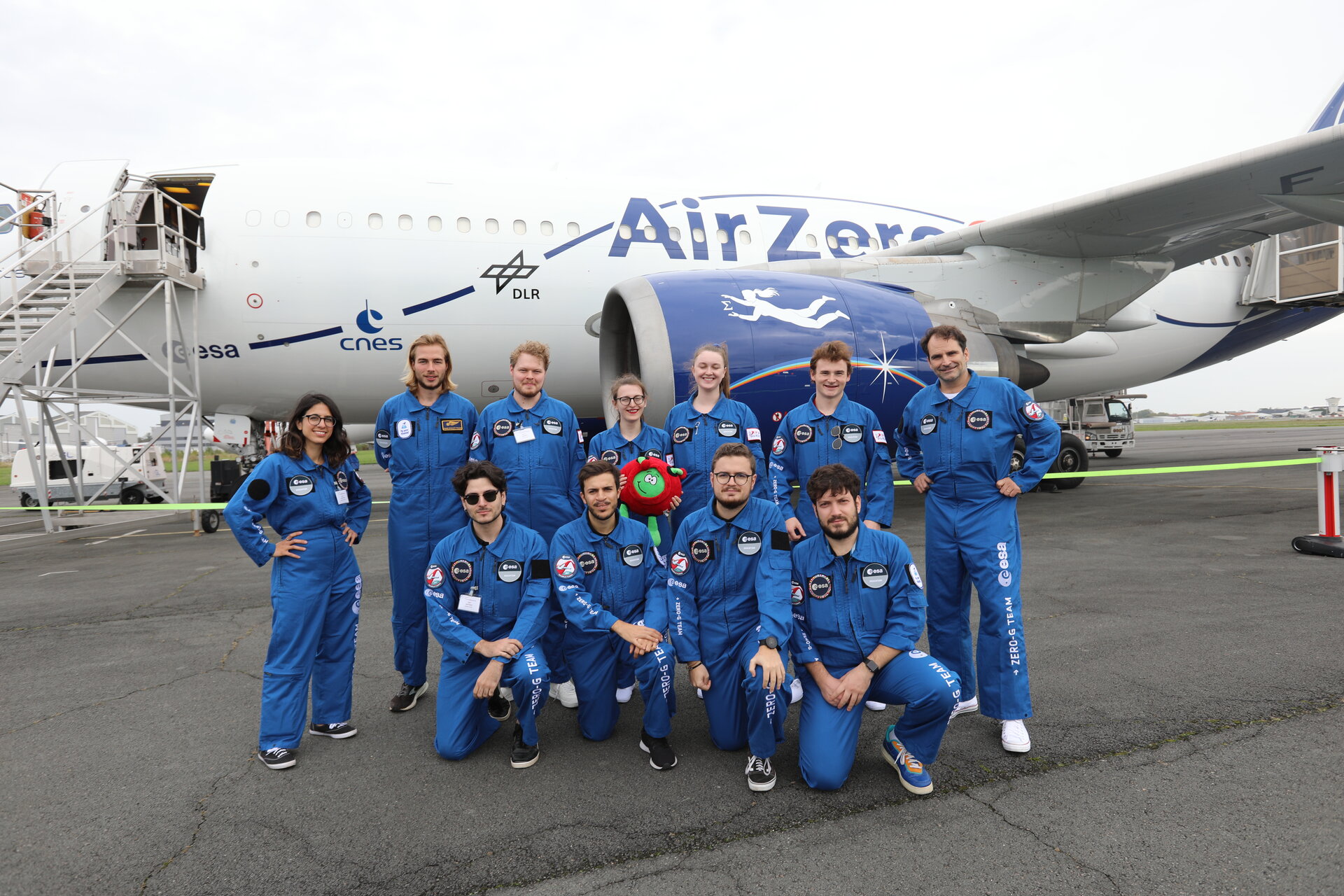Students participate successfully in a Parabolic Flight Campaign for ESA Education
In brief
Over the last two weeks, the 79th ESA Parabolic Flight Campaign operated by Novespace took place in Bordeaux, France. A total of eleven experiments were on board of the Airbus A310 AirZeroG, and two of them had been conceived by student teams in the framework of the ESA Academy.
In-depth
A year has elapsed since the teams submitted their experiment proposals, which were chosen due to their educational and scientific value and their feasibility. Team SUGAR and ERMES made it through in the end and worked hard to design, manufacture, assemble, and test their hardware. Being compliant to the safety requirements of Novespace is not trivial, as the experiments are to be operated on in proximity of scientists both in hypergravity and microgravity conditions.

The objective of the ERMES team from the University of Padova in Italy was to design and test an autonomous docking manoeuvre system for two free-flying CubeSats mock-ups. Both were equipped with a Guidance Navigation and Control (GNC) system and mechanical docking interfaces. They worked in a Target-Chaser configuration, where the Chaser was active and the Target was cooperative. The Chaser was equipped with a cold gas propulsive system based on expendable CO2 cartridges, while the Target was equipped with reaction wheels. The autonomous navigation for the manoeuvre was accomplished with a dedicated proximity navigation software. The team was challenged with the brief period before which these free-floating units collided with on the boundary of their experimental setup due to g-jitters, but the campaign allowed them to capture the data they need to iterate their system for microgravity operations.

SUGAR, a team of students from Newcastle University studied cell signalling transduction in abnormal gravity conditions. The team had hypothesised that in microgravity or hypergravity glucose uptake by yeast will be slower than in ‘normal’ gravity conditions. To test the hypothesis, the team developed an experiment to visually detect the uptake of glucose by yeast during parabolic flights. For this the team built a microscope that could withstand the altered gravity conditions and vibrations experienced on a parabolic flight and used it to image yeast cells that have been given modified glucose which emits light signals through fluorescence.

Beyond the scientific and technical success, the campaign was an incubator full of strong emotions as people experienced weightlessness for the first time. Arrived safely in their respective countries with an unforgettable memories and hard drives full of data, the teams are ready to gently come back down to Earth and tackle the data analysis. ESA Academy will follow each team for another 4 months until their final report is due in March 2023.
The parabolic flight platform for student experiments offers an educational experience you will never forget
PETRI is a programme allowing student teams a unique practical experience and training with the European Space Agency and partners that complements and enhances university students’ academic journey, achieved by giving students an introduction into the professional world of research and development of space science and technology. Teams are guided through all the steps of developing their project from concept to operations and data analysis, including industry standard engineering practices, good project management, risk mitigation and effective fundraising techniques. The programme offers multiple platforms to conduct the experiment: the Large Diameter Centrifuge, the ZARM Drop Towers, the Parabolic flight and the ICECubes Facility on board the International Space Station.
Teams selected for the parabolic flight platform receive valuable feedback from ESA, Novespace, and European Low Gravity Research Association (ELGRA) experts. In addition to all of this, they get the extraordinary opportunity to execute their experiments in microgravity conditions on-board the Novespace AirZeroG aircraft, right next to experiments and teams of professional researchers. As a direct consequence of the research students conducted during past campaigns, many have so far been able to present their results at international conferences and/or to publish papers in leading scientific journals. The experience gained is an important addition to students’ curriculum vitae and increases their chance of being elected for future professional opportunities.
You can check for current opportunities within the ESA Academy here and within the PETRI programme here.


